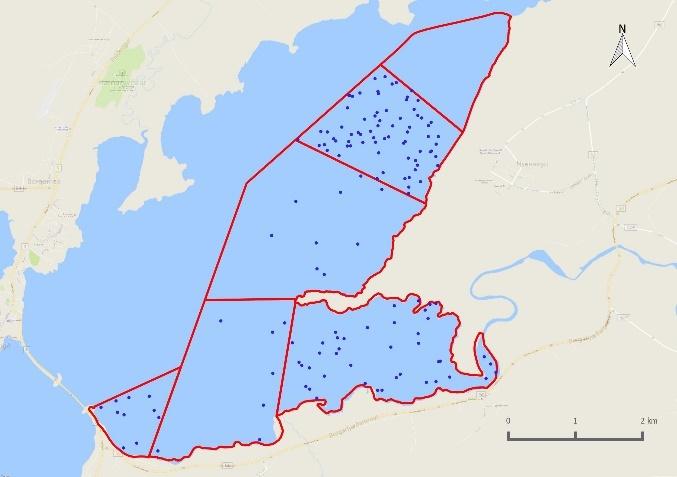
2 minute read
Eurasian Teal
Eurasian Teal
Anas crecca Urtönd
Teal were recorded in low-numbers (< 50 birds), sporadically, until the end of July. Numbers grew throughout August and peaked at 1,327 birds on 30th August. These numbers were sustained through September (c. 900 birds). There were 200-400 birds recorded during October. The Icelandic population of Teal is estimated at 3,000-5,000 breeding pairs (Skarphéðinsson et al 2006). Therefore, the numbers recorded in late-August and September represent a significant proportion of the national population. Birds were most often recorded in Kistufjörđur (Est 2) during both low tide and rising tide surveys.
Number of individuals 1400 1200 1000 800 600 400 200 0 Low-tide Rising-tide

10 11 12 13 14 15 16 17 18 19 20 21 22 23 24 25 26 27 28 29 30 31 32 33 34 35 36 37 38 39 40 41 42 43 Mar Apr May Jun Jul Aug Sep Oct Week number and month
Figure 3-35. Number of Anas crecca recorded during weekly low tide and rising tide estuarine surveys in the Andakíll Ramsar site between 12th March and 25th October 2017.
Figure 3-36. Relative abundance of Anas crecca during weekly (a) low tide and (b) rising tide estuarine surveys in the Andakíll Ramsar site between 12th March and 25th October 2017. Dots are randomly positioned within each subsite. While each dot refers to a single bird, it refers to the bird’s presence in that subsite only, and not the bird’s actual location.
(a) Low tide (b) Rising tide




(a) Spring (b) Autumn
Figure 3-37. Relative abundance during (a) spring and (b) autumn of Anas crecca counted on twice-weekly estuarine surveys in the Andakíll Ramsar site in 2017. Spring = 12th March - 7th June; Autumn = 12th June 25th October. The number of dots in each subsite refers to the total number of bird-records (from weekly low tide and rising tide surveys) in spring and autumn, adjusted for the length of the season, and reflects the species’ abundance in that season, not the specific location of birds. Figure 3-38.Proportion of foraging and roosting Anas crecca during weekly (a) low tide and (b) rising tide estuarine surveys in six subsites in the Andakíll Ramsar site between 12th March and 25th October 2017.
(a) Low tide (b) Rising tide












